Multi-Access Channel Based on Quantum Detection in Wireless Optical Communication
Abstract
1. Introduction
2. Multi-Access Channel and Quantum Detection
2.1. Notation and Symbol Definitions
2.2. Multi-Access Channel Based on Symmetrical Coherent States
2.3. Multi-User Detection Based on Quantum Measurement
2.4. Two-User Channel Capacities Based on MED and USD
2.5. Capacity of Thermal Noise Channel
3. Results and Analysis
3.1. Setup for Numerical Results
3.2. Numerical Result of Two-User Detection in Absence of Noise
3.3. USD Detection Performance in Presence of Thermal Noise
4. Discussion
4.1. Computational Complexity of MED and USD
4.2. Comparison with NOMA
4.3. Does QAM Work for MED and USD?
5. Conclusions
Author Contributions
Funding
Institutional Review Board Statement
Informed Consent Statement
Data Availability Statement
Conflicts of Interest
References
- Koonen, T. Indoor Optical Wireless Systems: Technology, Trends, and Applications. J. Lightwave Technol. 2018, 36, 1459–1467. [Google Scholar] [CrossRef]
- Gomez, A.; Shi, K.; Quintana, C.; Sato, M.; Faulkner, G.; Thomsen, B.C.; O’Brien, D. Beyond 100-Gb/s Indoor Wide Field-of-View Optical Wireless Communications. IEEE Photonics Technol. Lett. 2015, 27, 367–370. [Google Scholar] [CrossRef]
- Wang, Y.Q.; Huang, X.X.; Zhang, J.W.; Wang, Y.G.; Chi, N. Enhanced performance of visible light communication employing 512-QAM N-SC-FDE and DD-LMS. Opt. Express 2014, 22, 15328–15334. [Google Scholar] [CrossRef] [PubMed]
- Kaushal, H.; Kaddoum, G. Optical Communication in Space: Challenges and Mitigation Techniques. IEEE Commun. Surv. Tutor. 2017, 19, 57–96. [Google Scholar] [CrossRef]
- Khalighi, M.A.; Uysal, M. Survey on Free Space Optical Communication: A Communication Theory Perspective. IEEE Commun. Surv. Tutor. 2014, 16, 2231–2258. [Google Scholar] [CrossRef]
- Messa, A.; Cossu, G.; Presi, M.; Schidl, S.; Schneider-Hornstein, K.; Zimmermann, H.; Ciaramella, E. Detecting WDM visible light signals by a single multi-color photodiode with MIMO processing. Opt. Lett. 2020, 45, 1160–1163. [Google Scholar] [CrossRef]
- He, C.W.; Cincotta, S.; Mohammed, M.M.A.; Armstrong, J. Angular Diversity Aperture (ADA) Receivers for Indoor Multiple-Input Multiple-Output (MIMO) Visible Light Communications (VLC). IEEE Access 2019, 7, 145282–145301. [Google Scholar] [CrossRef]
- Fath, T.; Haas, H. Performance Comparison of MIMO Techniques for Optical Wireless Communications in Indoor Environments. IEEE Trans. Commun. 2013, 61, 733–742. [Google Scholar] [CrossRef]
- Jurado-Navas, A.; Raddo, T.R.; Garrido-Balsells, J.M.; Borges, B.H.V.; Olmos, J.J.V.; Monroy, I.T. Hybrid optical CDMA-FSO communications network under spatially correlated gamma-gamma scintillation. Opt. Express 2016, 24, 16799–16814. [Google Scholar] [CrossRef]
- Li, R.J.; Dang, A.H. A Novel Coherent OCDMA Scheme Over Atmospheric Turbulence Channels. IEEE Photonics Technol. Lett. 2017, 29, 427–430. [Google Scholar] [CrossRef]
- Abouei, J.; Plataniotis, K.N. Multiuser Diversity Scheduling in Free-Space Optical Communications. J. Lightwave Technol. 2012, 30, 1351–1358. [Google Scholar] [CrossRef]
- Li, R.J.; Dang, A.H. Multi-user access in wireless optical communication system. Opt. Express 2018, 26, 22658–22672. [Google Scholar] [CrossRef]
- Wang, K.; Kandeepan, S.; Alameh, K. Filter-Enhanced Multi-User Scheme for Spatial Modulation Based Optical Wireless Communication Systems. J. Lightwave Technol. 2022, 40, 74–84. [Google Scholar] [CrossRef]
- Helstrom, C.W. Quantum detection and estimation theory. J. Stat. Phys. 1969, 1, 231–252. [Google Scholar] [CrossRef]
- Ivanovic, I.D. How to differentiate between non-orthogonal states. Phys. Lett. A 1987, 123, 257–259. [Google Scholar] [CrossRef]
- Dieks, D. Overlap and distinguishability of quantum states. Phys. Lett. A 1988, 126, 303–306. [Google Scholar] [CrossRef]
- Wittmann, C.; Andersen, U.L.; Takeoka, M.; Sych, D.; Leuchs, G. Demonstration of coherent-state discrimination using a displacement-controlled photon-number-resolving detector. Phys. Rev. Lett. 2010, 104, 100505. [Google Scholar] [CrossRef]
- Dolinar, S.J. An optimum receiver for the binary coherent state quantum channel. Res. Lab. Electron. MIT Q. Prog. Rep. 1973, 11, 115–120. [Google Scholar]
- Cook, R.L.; Martin, P.J.; Geremia, J.M. Optical coherent state discrimination using a closed-loop quantum measurement. Nature 2007, 446, 774–777. [Google Scholar] [CrossRef]
- Bondurant, R.S. Near-quantum optimum receivers for the phase-quadrature coherent-state channel. Opt. Lett. 1993, 18, 1896–1898. [Google Scholar] [CrossRef]
- Wittmann, C.; Takeoka, M.; Cassemiro, K.N.; Sasaki, M.; Leuchs, G.; Andersen, U.L. Demonstration of near-optimal discrimination of optical coherent states. Phys. Rev. Lett. 2008, 101, 210501. [Google Scholar] [CrossRef]
- Tsujino, K.; Fukuda, D.; Fujii, G.; Inoue, S.; Fujiwara, M.; Takeoka, M.; Sasaki, M. Quantum receiver beyond the standard quantum limit of coherent optical communication. Phys. Rev. Lett. 2011, 106, 250503. [Google Scholar] [CrossRef]
- Becerra, F.; Fan, J.; Baumgartner, G.; Polyakov, S.; Goldhar, J.; Kosloski, J.; Migdall, A. M-ary-state phase-shift-keying discrimination below the homodyne limit. Phys. Rev. A 2011, 84, 062324. [Google Scholar] [CrossRef]
- Becerra, F.; Fan, J.; Baumgartner, G.; Goldhar, J.; Kosloski, J.; Migdall, A. Experimental demonstration of a receiver beating the standard quantum limit for multiple nonorthogonal state discrimination. Nat. Photonics 2013, 7, 147–152. [Google Scholar] [CrossRef]
- Banaszek, K. Optimal receiver for quantum cryptography with two coherent states. Phys. Lett. A 1999, 253, 12–15. [Google Scholar] [CrossRef][Green Version]
- Van Enk, S. Unambiguous state discrimination of coherent states with linear optics: Application to quantum cryptography. Phys. Rev. A 2002, 66, 042313. [Google Scholar] [CrossRef]
- Sedlák, M.; Ziman, M.; Přibyla, O.; Bužek, V.; Hillery, M. Unambiguous identification of coherent states: Searching a quantum database. Phys. Rev. A 2007, 76, 022326. [Google Scholar] [CrossRef]
- Bartůšková, L.; Černoch, A.; Soubusta, J.; Dušek, M. Programmable discriminator of coherent states: Experimental realization. Phys. Rev. A 2008, 77, 034306. [Google Scholar] [CrossRef]
- Waldherr, G.; Dada, A.C.; Neumann, P.; Jelezko, F.; Andersson, E.; Wrachtrup, J. Distinguishing between Nonorthogonal Quantum States of a Single Nuclear Spin. Phys. Rev. Lett. 2012, 109, 180501. [Google Scholar] [CrossRef]
- Becerra, F.E.; Fan, J.; Migdall, A. Implementation of generalized quantum measurements for unambiguous discrimination of multiple non-orthogonal coherent states. Nat. Commun. 2013, 4, 2028. [Google Scholar] [CrossRef] [PubMed]
- Mohseni, M.; Steinberg, A.M.; Bergou, J.A. Optical Realization of Optimal Unambiguous Discrimination for Pure and Mixed Quantum States. Phys. Rev. Lett. 2004, 93, 200403. [Google Scholar] [CrossRef] [PubMed]
- Touzel, M.A.P.; Adamson, R.B.A.; Steinberg, A.M. Optimal bounded-error strategies for projective measurements in nonorthogonal-state discrimination. Phys. Rev. A 2007, 76, 062314. [Google Scholar] [CrossRef]
- Aboagye, E.D.; Chen, S.-P. Deep space optical communications (DSOC) downlink simulation with varying PPM order. Opt. Quantum Electron. 2021, 53, 583. [Google Scholar] [CrossRef]
- Elron, N.; Eldar, Y.C. Quantum detection with uncertain states. Phys. Rev. A 2005, 72, 032338. [Google Scholar] [CrossRef]
- Eldar, Y.C.; Megretski, A.; Verghese, G.C. Optimal detection of symmetric mixed quantum states. IEEE Trans. Inf. Theory 2004, 50, 1198–1207. [Google Scholar] [CrossRef]
- Sasaki, M.; Hirota, O. Optimum decision scheme with a unitary control process for binary quantum-state signals. Phys. Rev. A 1996, 54, 2728–2736. [Google Scholar] [CrossRef]
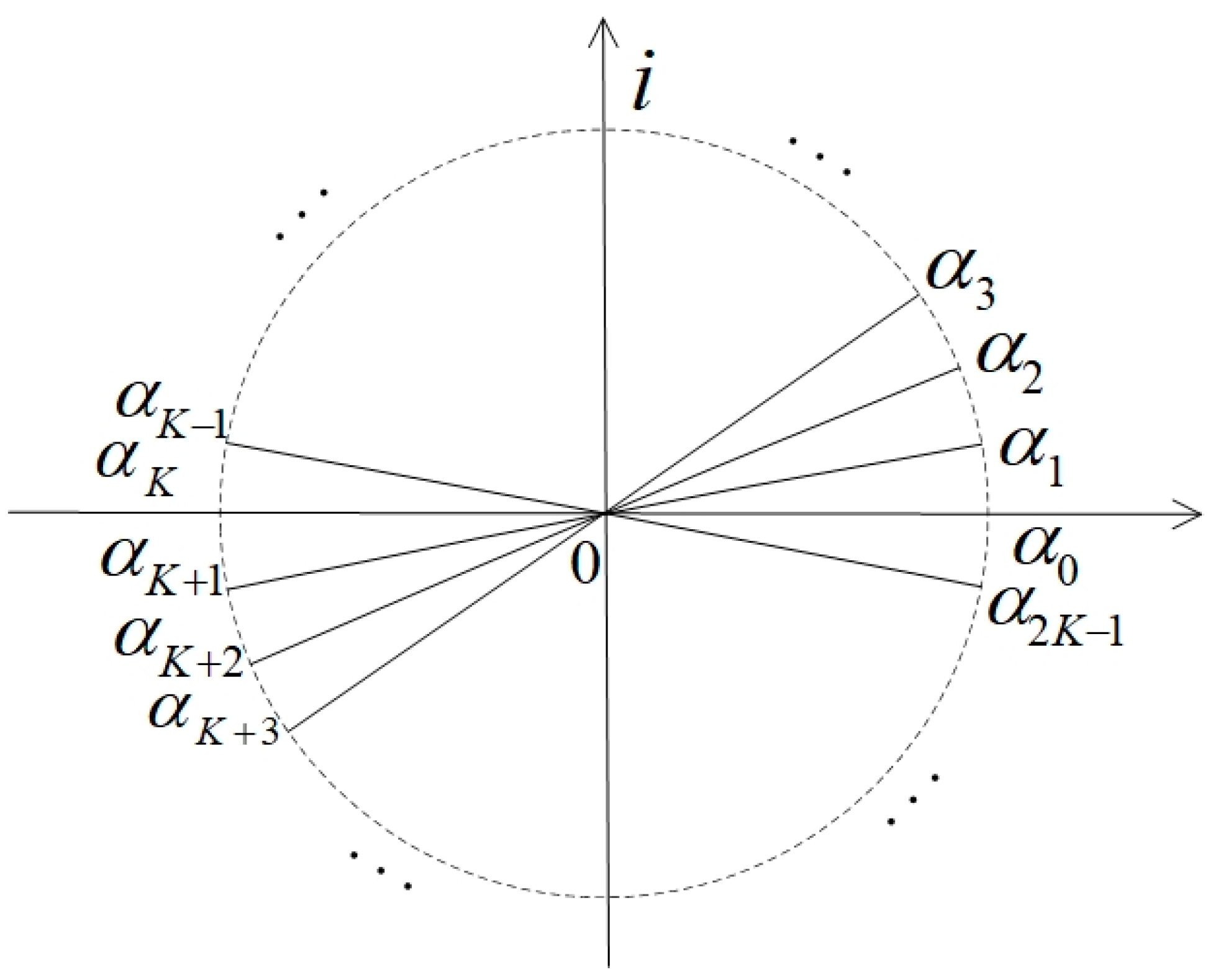
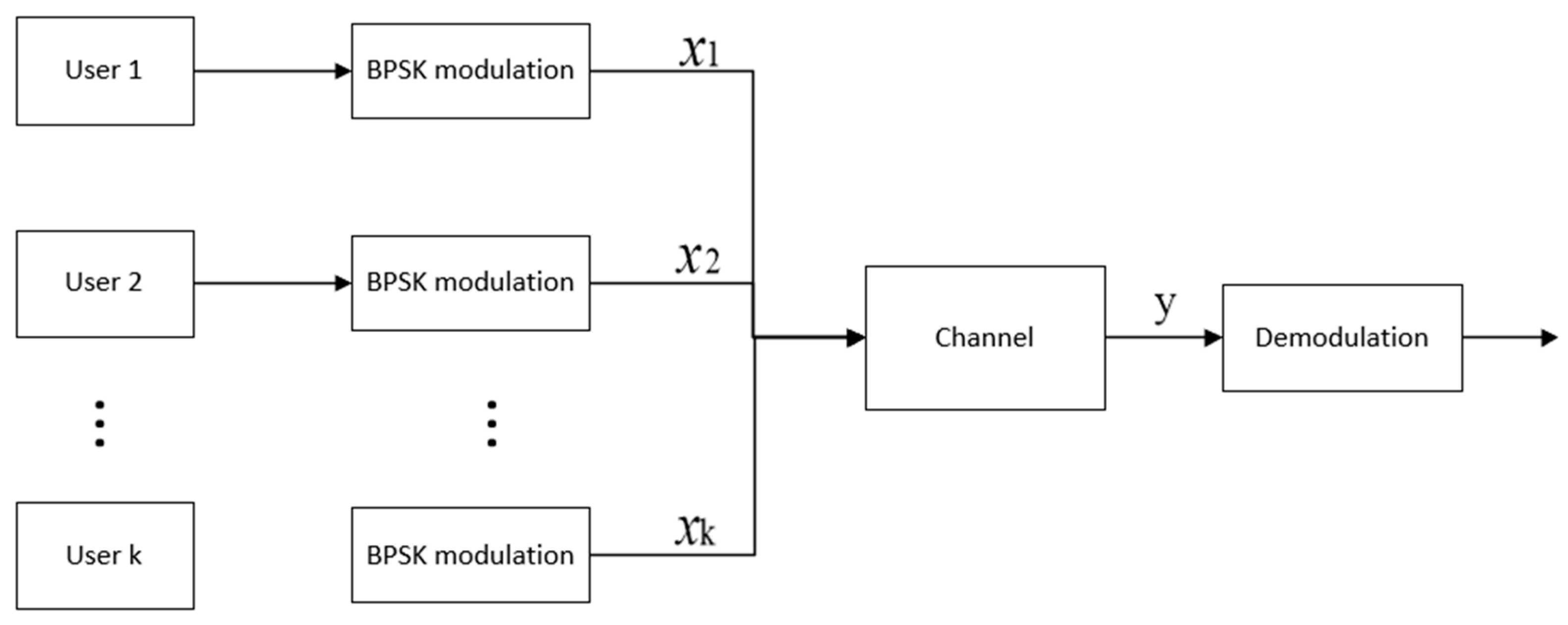
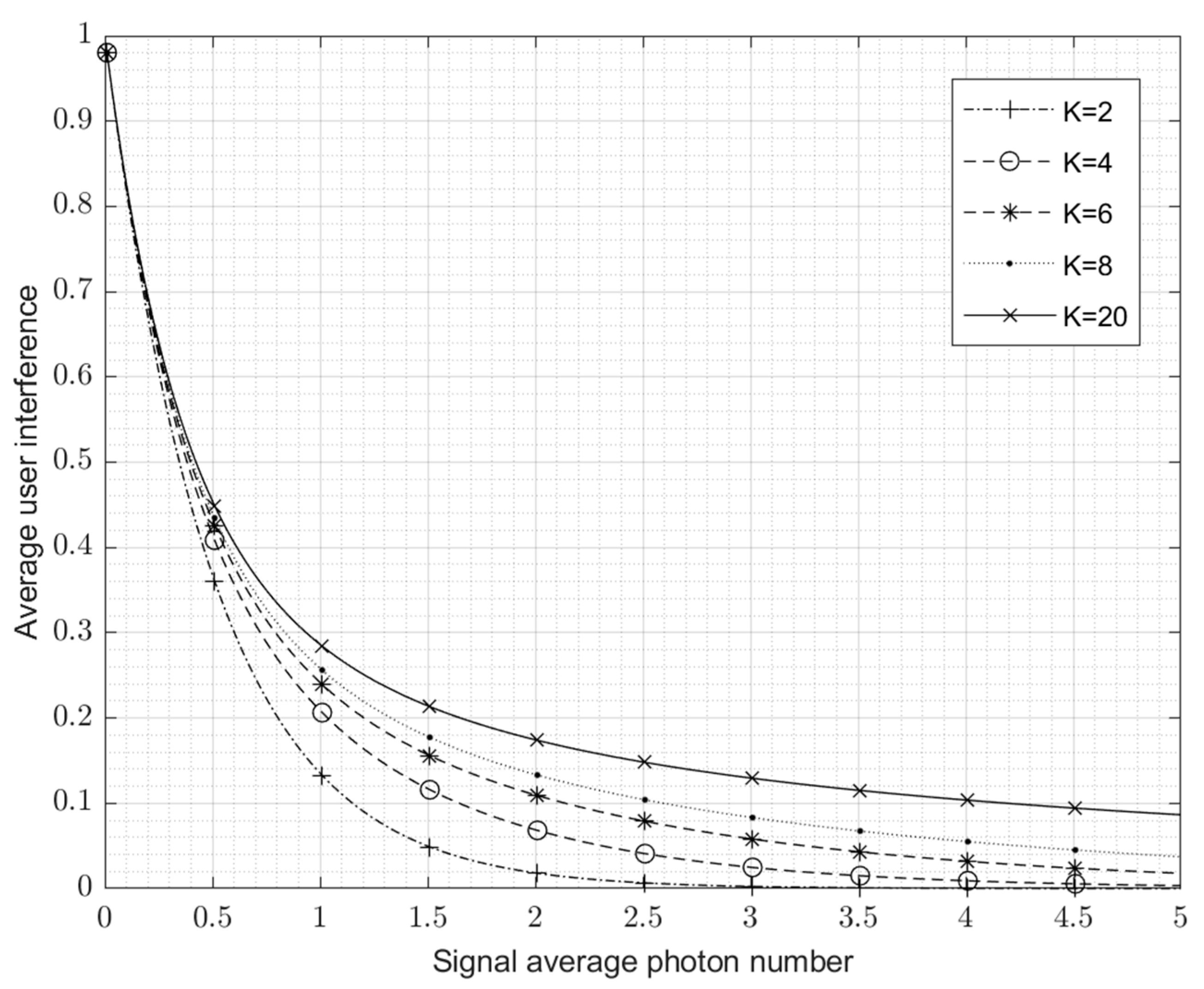

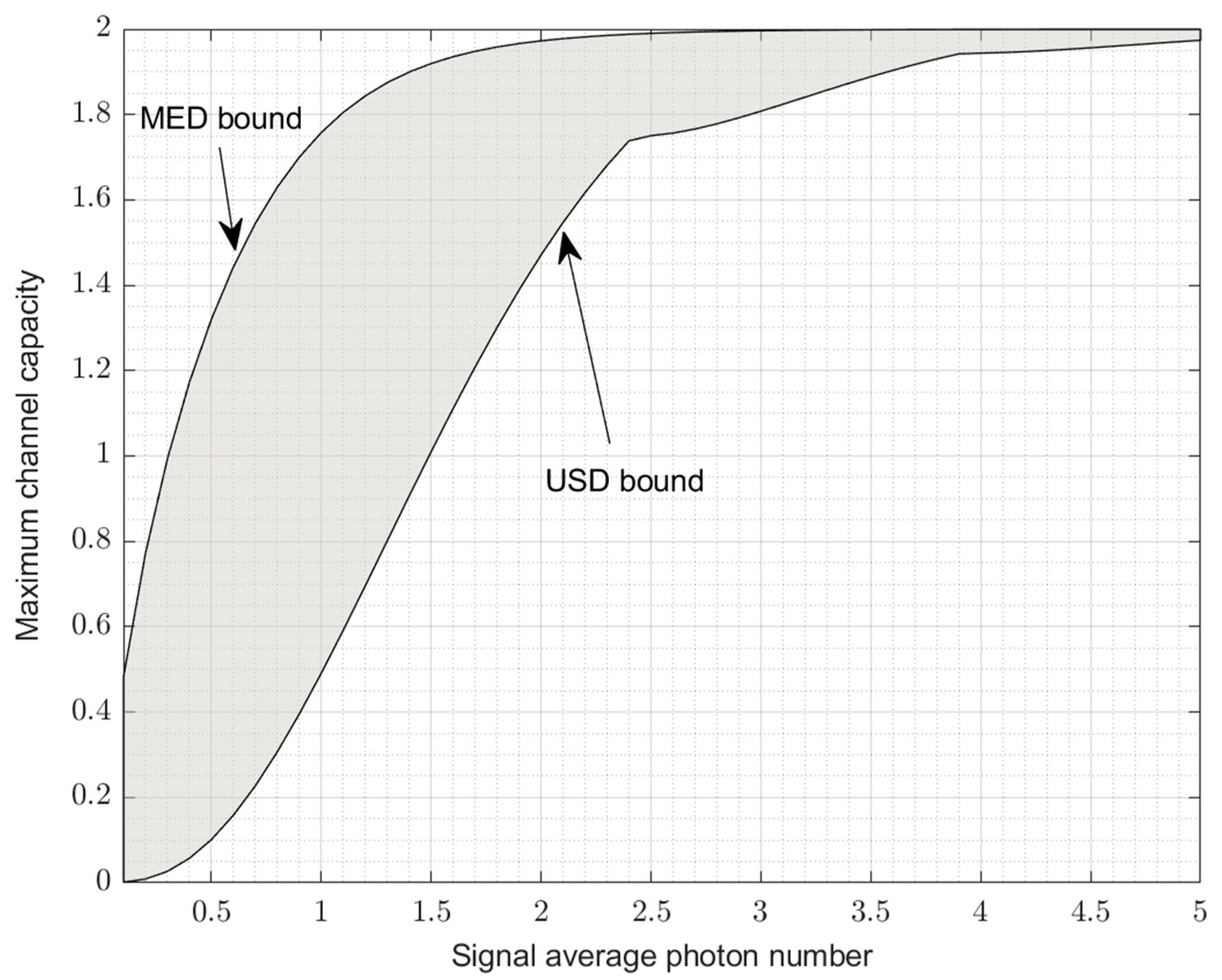
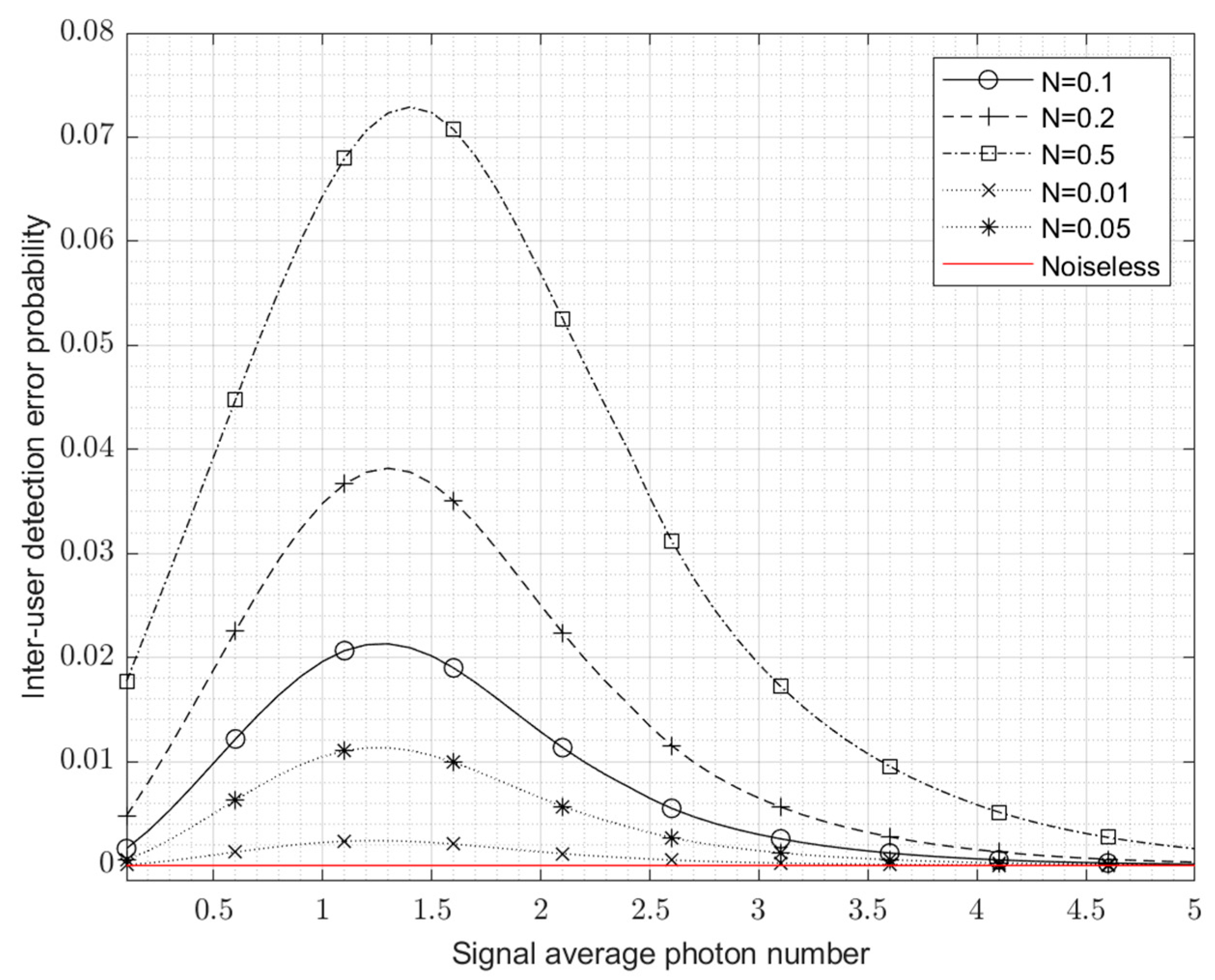
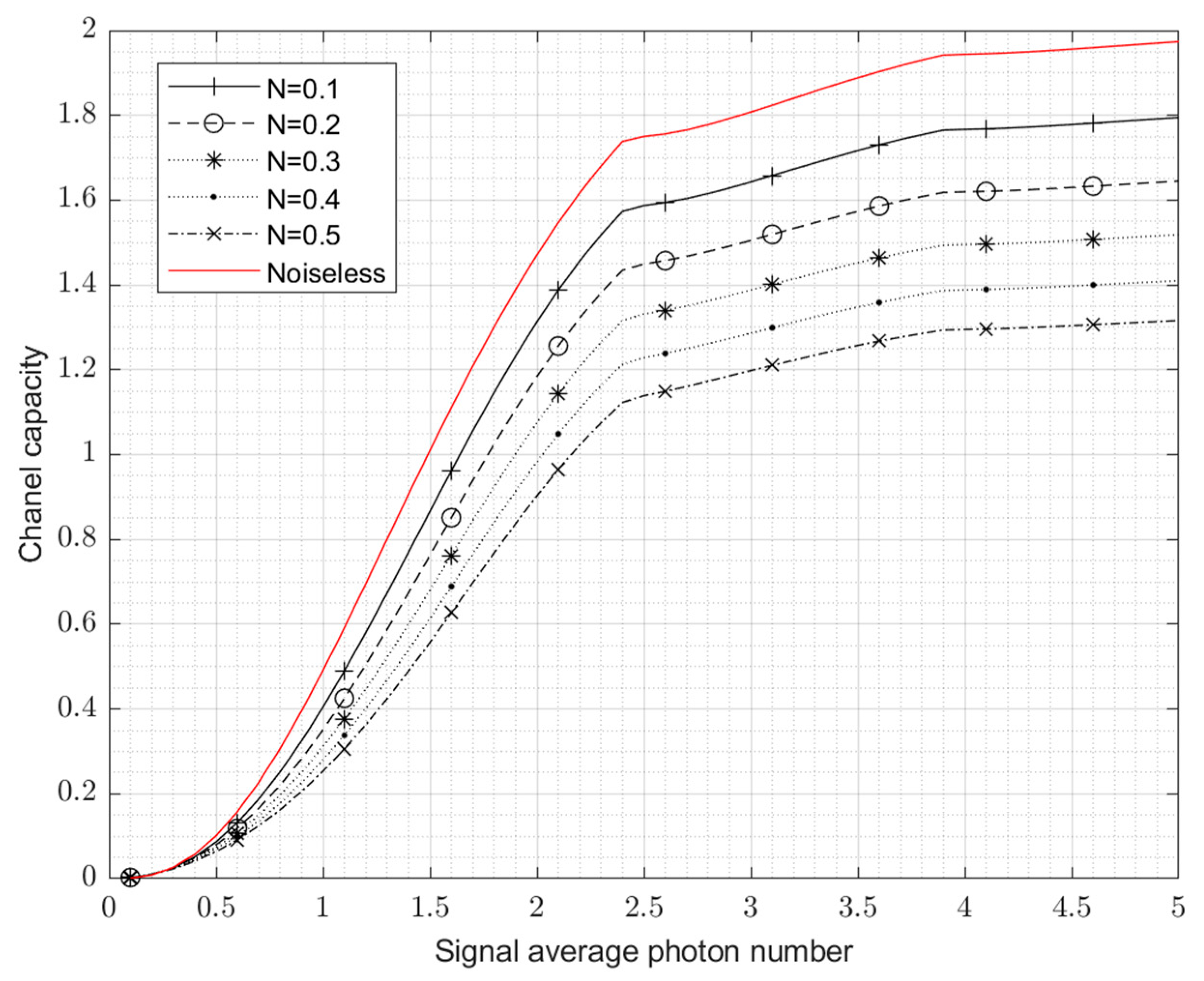
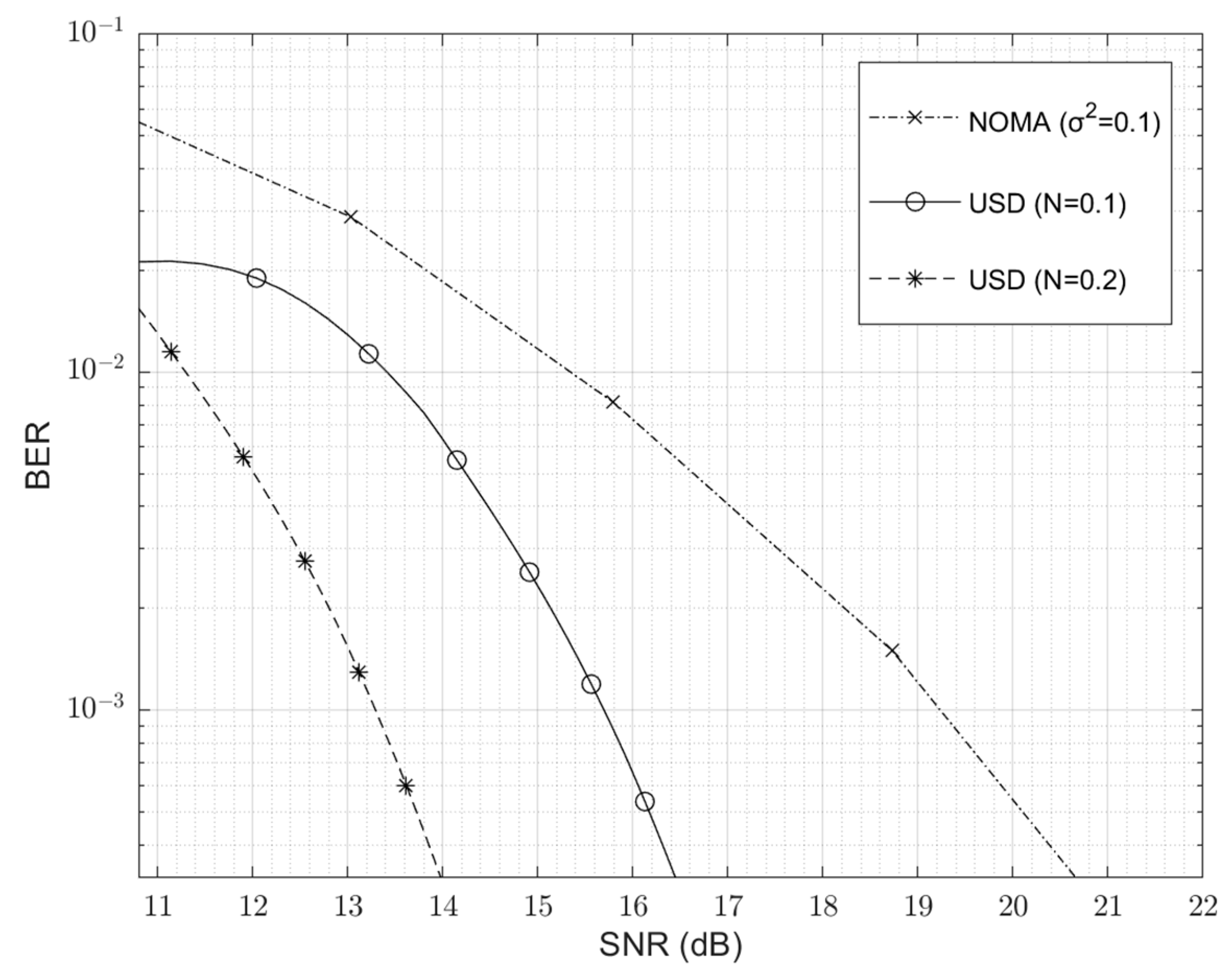
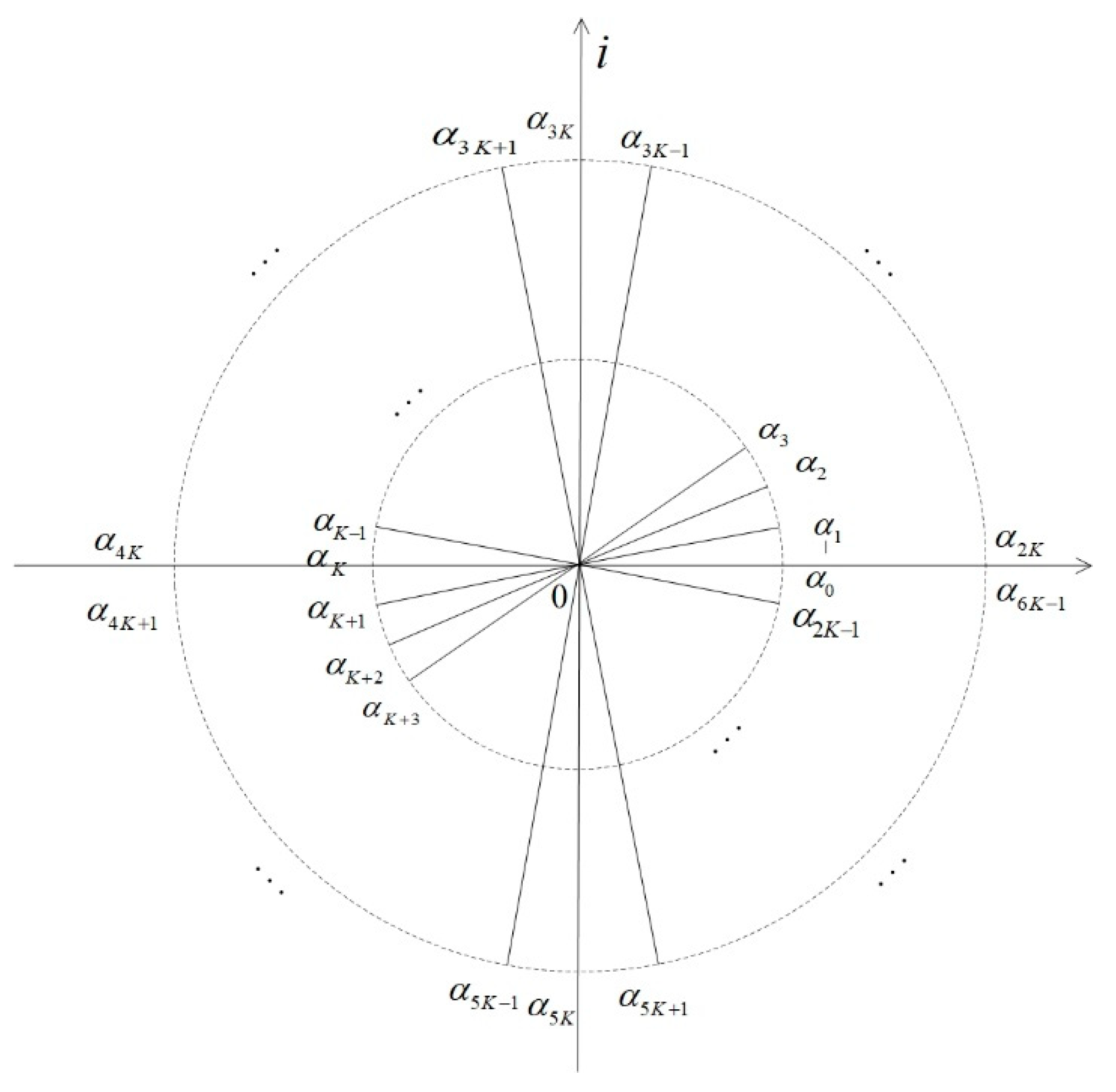
| Notation or Symbol | Definition |
|---|---|
| BPSK | Binary phase shift keying |
| M-PSK | M-ary phase shift keying |
| QAM | Quadrature amplitude modulation |
| POVM | Operators of positive-operator-valued measure |
| Number of users in the multi-access channel | |
| Coherent state | |
| POVM operators | |
| Signal average photon number, characterize the power of the signal. | |
| Thermal noise average photon number, characterize the power of the noise. | |
| Density operator for signal superimposed thermal noise, usually . | |
| BER | Bit error rate |
| Signal-to-noise rate; in this paper, it is denoted as . |
Publisher’s Note: MDPI stays neutral with regard to jurisdictional claims in published maps and institutional affiliations. |
© 2022 by the authors. Licensee MDPI, Basel, Switzerland. This article is an open access article distributed under the terms and conditions of the Creative Commons Attribution (CC BY) license (https://creativecommons.org/licenses/by/4.0/).
Share and Cite
Yu, W.; Chen, F.; Xu, Z.; Zhang, Y.; Liu, A.X.; Zhang, C. Multi-Access Channel Based on Quantum Detection in Wireless Optical Communication. Entropy 2022, 24, 1044. https://doi.org/10.3390/e24081044
Yu W, Chen F, Xu Z, Zhang Y, Liu AX, Zhang C. Multi-Access Channel Based on Quantum Detection in Wireless Optical Communication. Entropy. 2022; 24(8):1044. https://doi.org/10.3390/e24081044
Chicago/Turabian StyleYu, Wenbin, Fei Chen, Zeyu Xu, Yifan Zhang, Alex X. Liu, and Chengjun Zhang. 2022. "Multi-Access Channel Based on Quantum Detection in Wireless Optical Communication" Entropy 24, no. 8: 1044. https://doi.org/10.3390/e24081044
APA StyleYu, W., Chen, F., Xu, Z., Zhang, Y., Liu, A. X., & Zhang, C. (2022). Multi-Access Channel Based on Quantum Detection in Wireless Optical Communication. Entropy, 24(8), 1044. https://doi.org/10.3390/e24081044







